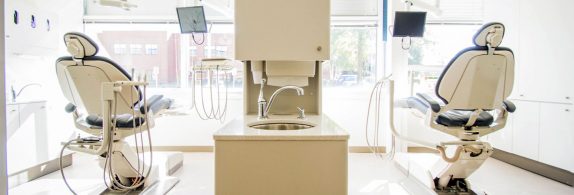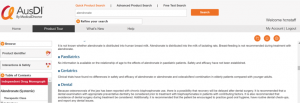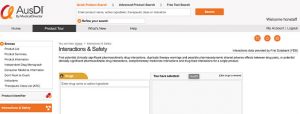3 Drug safety tips for dental practice
A recent case of a dentist prescribing a two-year old and seven-year old benzodiazepines, who both later presented to A&E, has opened up debate as to how to optimise drug safety in dental practice.
In this article, we take a look at three drug safety strategies dentists can leverage to empower their practice, enhance quality of care and minimise risk.
1. Make drug safety a priority
In a recent NSW Civil and Administrative tribunal hearing, a dentist was reprimanded for prescribing benzodiazepines to a two year-old and a seven-year-old, who later both presented to A&E as a result of the prescriptions.
During the hearing, concerns were raised over the dentist for having:
- inappropriate protocols for informed consent, dispensing and monitoring
- inadequate knowledge of oral sedation
- lack of knowledge around prescribing and pharmaceuticals
- an overly-formulaic approach, particularly to the prescription of antibiotics
- inadequate consideration of the children’s age and weight when prescribing.
In particular, the Tribunal highlighted the significance of making drug safety a priority within dental practice, to build upon continued professional development and education and for dentists not to make any assumptions that a pharmacist could offer patients any additional or specific instructions about the medications prescribed.
2. Revise the policies and guidelines for prescribing medications in dentistry
Whilst dentists are generally less common prescribers, the Australian Dental Association (ADA)’s policy statement on prescribing notes that:
“Dentists must be able to prescribe, supply or administer any appropriate drug for dental patients for the purposes of dental treatment (including drugs of addiction)”.
It also states dentists should be able to generate prescriptions via a computer, and participate in ePrescribing. Importantly, the policy stresses:
“Safe and competent prescribing requires dentists to know when and when not to prescribe. It depends on a sound knowledge of the pharmacology of medications including their interactions with other prescribed and non-prescribed medications.”
Meanwhile according to the Pharmaceutical Benefits Scheme (PBS), dentists are not able to prescribe general PBS medicines, however they have a separate Dental formulary from which they can prescribe medications. PBS Schedule dental items can be found here, and Scheduled PBS dental medicines are also listed and updated regularly in electronic medicines and information database, AusDI.
3. Leverage the power of electronic medicines information databases and resources
The challenge dentists continue to face is balancing the relatively infrequent prescribing activities, which often happen in isolation of a patient’s full medication history, with safe and competent prescribing, supply or administration of medicine. It’s here where a reliable online medicines information database can help.
Australia’s largest electronic medicines and information database, AusDI, offers a number of intelligent features that can help the dental prescribing process including:
-
- Independently written drug monographs: which include dental safety precautions where relevant:

- Independently written drug monographs: which include dental safety precautions where relevant:
-
- Product Summary documents: which deliver handy snapshot summaries of medicines, plus include relevant PBS dental information, where available:

- A comprehensive Drug Interactions and Safety Checking Module: which supports dental prescribing decisions:

- Product Summary documents: which deliver handy snapshot summaries of medicines, plus include relevant PBS dental information, where available:
Moving forward, whether you’re a dentist, pharmacist or doctor, all prescribing healthcare professionals need to be mindful of a patient’s medical history and current medications before prescribing, while leveraging the latest systems and tools to help boost drug safety and enhance patient outcomes.
AusDI is Australia’s trusted medicines information database. To find out more, visit ausdi.com.












